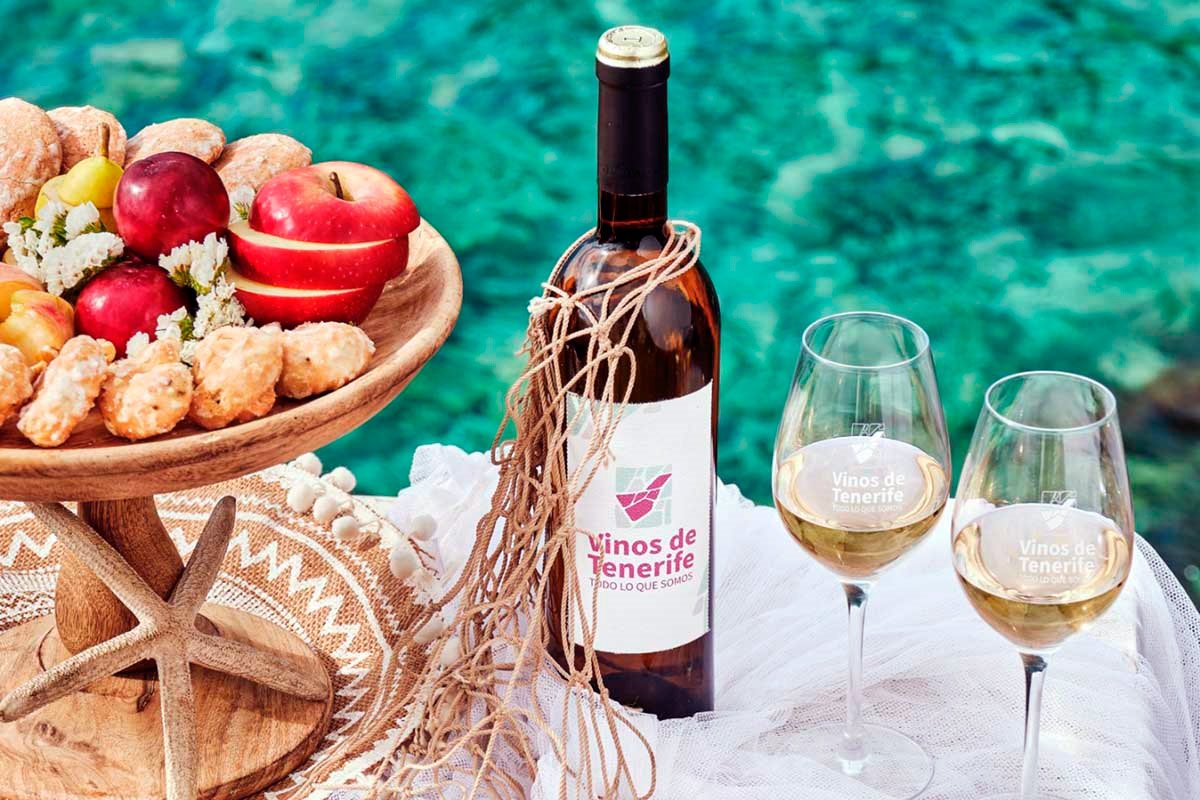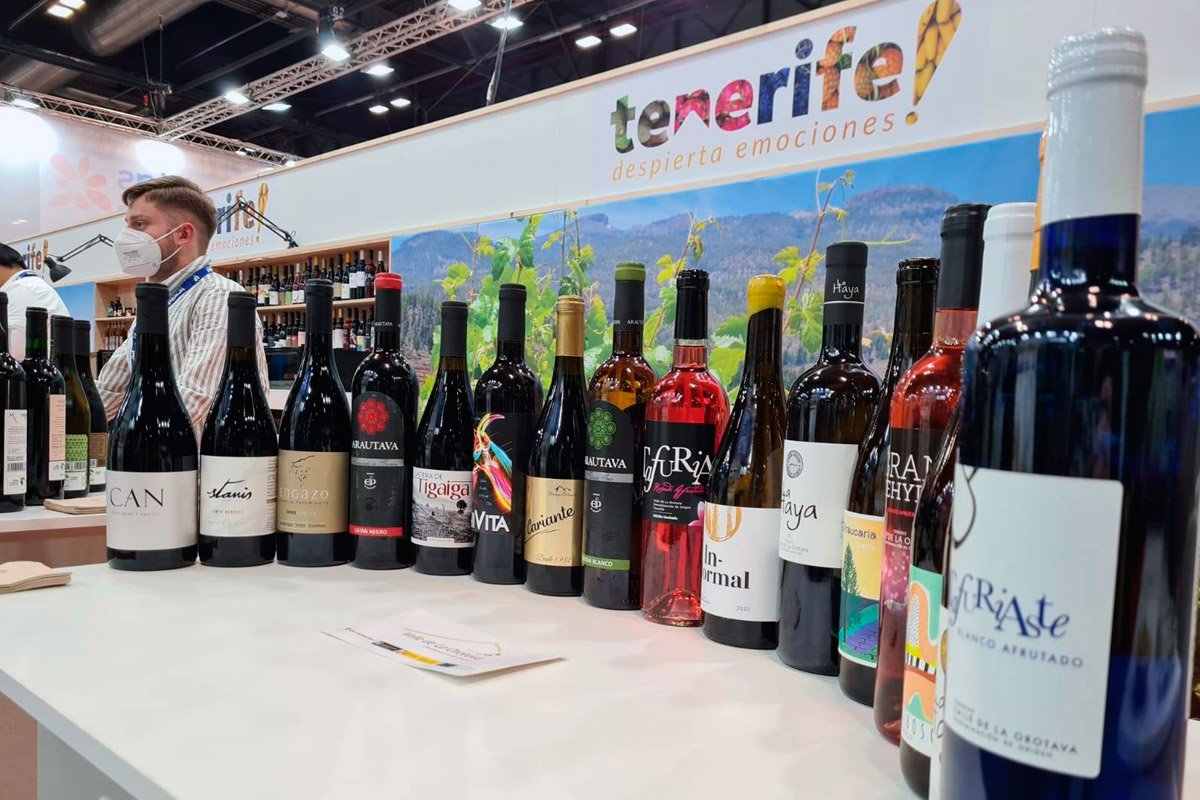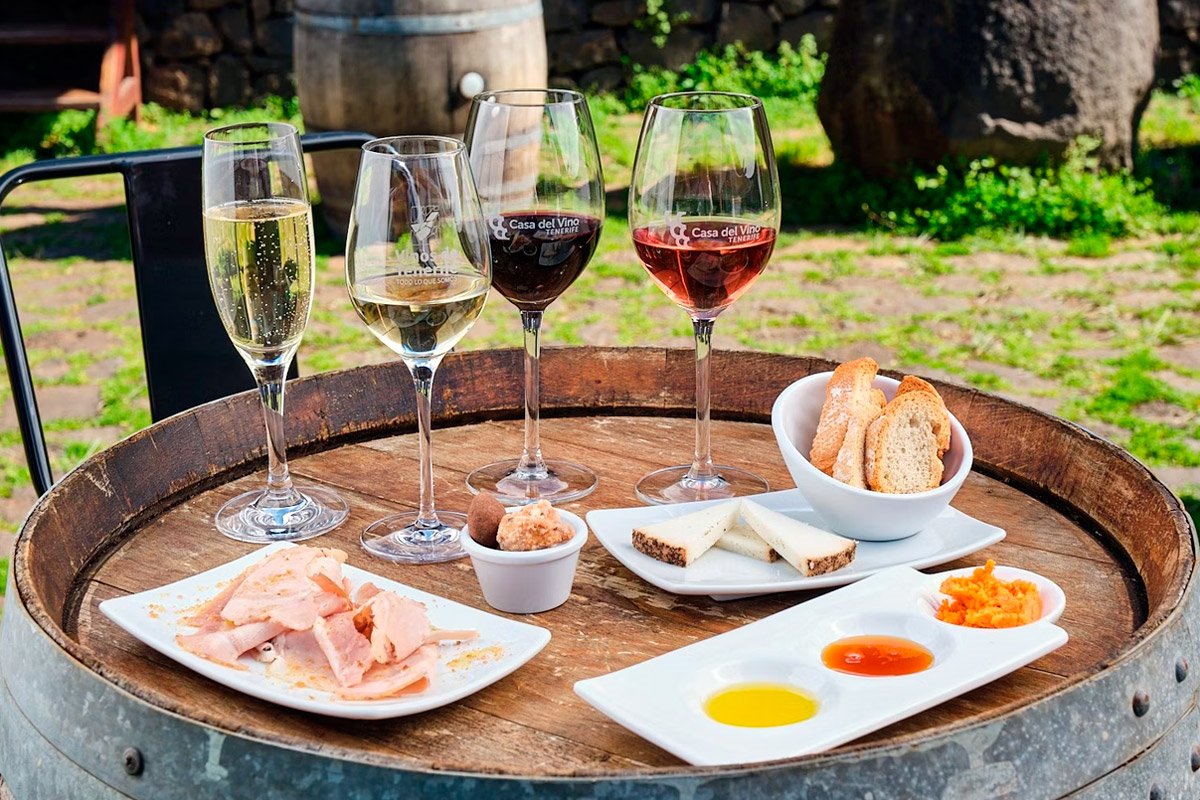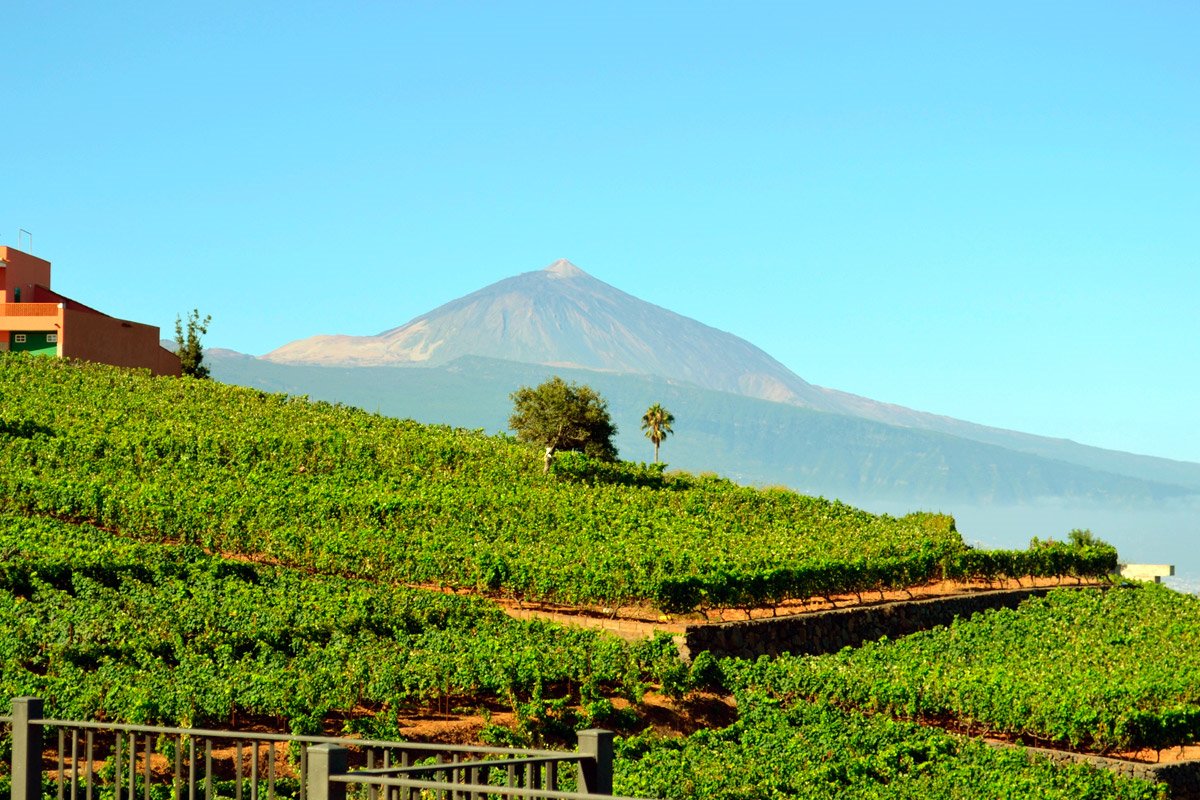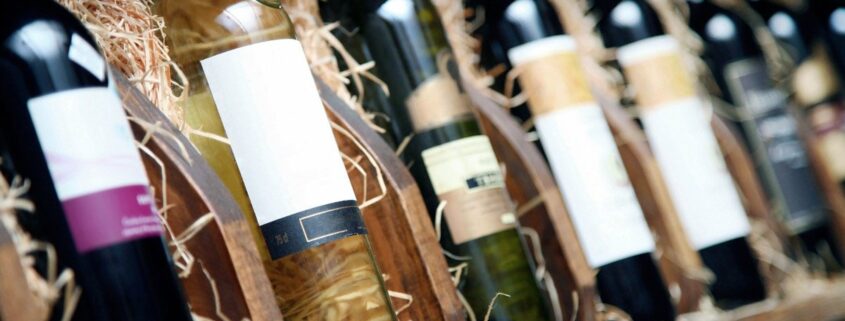
Tenerife, with its unique climatic conditions and volcanic soils, produces some very unique wines.
Tenerife’s wine history dates back to the 15th century, when the Spanish conquistadors introduced the first grape vines. In the 16th century, Tenerife wines, especially the famous Malvasía, were exported to Europe and America, gaining renown for their quality. Even writers such as William Shakespeare mentioned Canarian wines in their works.
From the vineyards that cling to the slopes of volcano Teide, at an altitude of over 1,200 metres, to the plantations near the coast, the wines reflect the richness of a territory whose soil, rich in minerals, gives them a character of fresh acidity and unmistakable mineral notes.
Grape varieties
Tenerife has a wide range of grape varieties for wine production, some of them exclusive to the island:
- Listán Blanco: Used to produce fresh and aromatic white wines.
- Listán Negro: Present in red and rosé wines, with fruity and spicy flavors.
- Volcanic Malvasia: The jewel in the crown, used for highly prestigious sweet and dry wines.
- Negramoll and Baboso Negro: Red varieties that provide intensity and complexity.
Denominations of Origin (DO) of Tenerife
The island has five Denominations of Origin:
- Abona: With vineyards at high altitude, it stands out for its light and fruity white wines.
- Tacoronte-Acentejo: Famous for its balanced and aromatic red wines.
- Valle de La Orotava: With vines in braided cordon, a unique technique in the world.
- Ycoden-Daute-Isora: Reference in fresh and mineral wines.
- Valle de Güímar: With whites that stand out for their acidity and freshness.
There is also a D.O.P. Canary Islands (Protected Designation of Origin) that integrates family wineries from all the islands, with the intention of protecting and consolidating their wines in the regional market and internationalizing Canarian wines.
Small independent winegrowers
In Tenerife, especially in the northern part and more rural areas, there is a tradition of small winegrowers who produce their own wine. Red wines are more common in the northern part of the island, and white wines in the southern part.
Many of these independent producers sell their wines directly from their homes or shops, offering something to eat as well, which is known as traditional guachinche. Others decide to sell their wine to other Canarian food restaurants, or in carafes and containers to anyone who comes to their houses for some (you will see rudimentary signs on the houses saying “I sell wine” or similar).
Visiting the Wineries: An Unmissable Plan
Touring Tenerife’s wineries is like immersing yourself in its winemaking tradition. From small family-run wineries to modern facilities, each visit offers the opportunity to discover artisanal processes and taste wines with spectacular views of the Atlantic or Mount Teide.
Some of these wineries to visit, with activities such as guided tours or wine tasting, are:
- Bodega el Lomo (Tegueste) – location – web site
- Bodega Linaje del Pago (El Sauzal) – location – web site
- Bodegas Monje (El Sauzal) – location – web site
- Bodegas El Sitio (Tacoronte) – location – web site
- Bodegas Ferrera (Arafo) – location – web site
- Bodega Comarcal Valle de Güímar (Arafo) – location – web site
- Bodega Cumbres de Abona (Arico) – location – web site
- Bodega Reverón (Vilaflor) – location – web site
- Bodegas Presas Ocampo (Tacoronte) – location – web site
Where to buy wines from Tenerife and other islands?
Many markets and supermarkets have some bottles from the most common wineries on the islands.
You can also go to wine shops and liquor stores, or directly to the winery that produces the wine you are interested in.
At the guachinches you can try local wine, and in some of them, buy bottles or carafes of wine to take away.
More images
